Harmonics and overtones are all about the extra layers of sound that shape the timbre of any musical tone you could imagine.
They can enhance clarity, add depth, and completely change how people perceive notes and frequencies altogether.
Cr
They basically define why a guitar string and a brass instrument playing the same frequency still sound totally different.
As producers, knowing all about harmonics and overtones can seriously help you shape your mixes, design epic sounds, and refine your instrument layering process.
Plus, understanding resonant frequencies, partials, and inharmonic overtones helps eliminate muddiness, create more presence, and develop a signature sound.
That’s why I’m breaking down everything you need to know, like:
- The harmonic series and how it affects timbre ✓
- The difference between harmonics and overtones ✓
- Odd harmonics vs. even harmonics in sound design ✓
- How to use harmonics in digital synthesis ✓
- Harmonic layering techniques for better mixes ✓
- How equalization affects harmonic balance ✓
- The role of inharmonicity in sound shaping ✓
- Psychoacoustic effects related to harmonics and overtones ✓
- How the undertone series differs from the harmonic series ✓
- Much more about harmonics and overtones ✓
By knowing all about harmonics and overtones, it can completely change the game for you in the music production world.
You’ll be able to fine-tune your mixes, design richer synth patches, and control frequency interactions with razor-sharp precision.
Plus, you’ll have a deep understanding of timbre, partials, and sound layering 一 letting you knock out professional-sounding tracks like a boss.
Table of Contents
Harmonics and Overtones: Breaking it Down
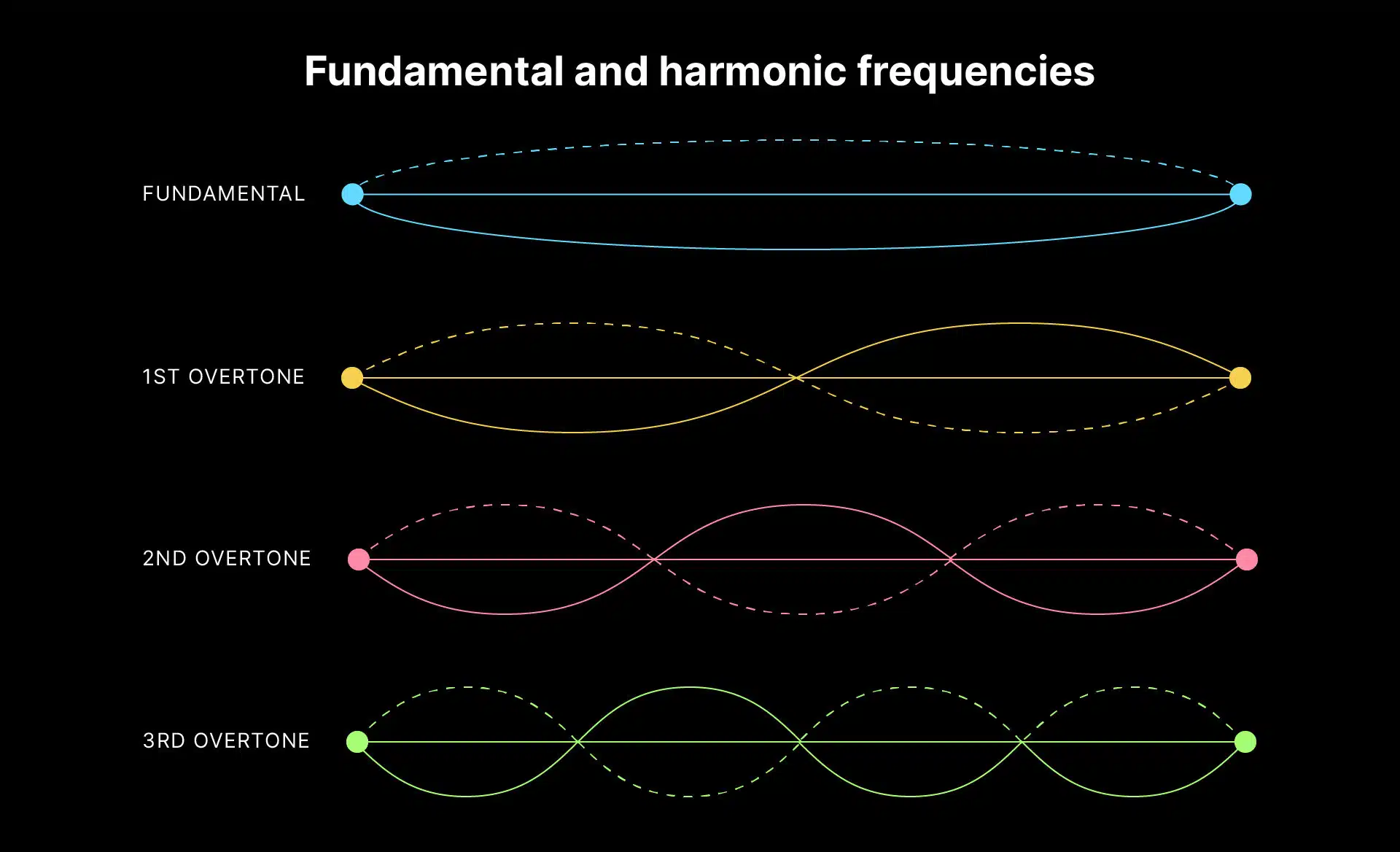
When we talk about harmonics and overtones, we’re really breaking down the building blocks of sound itself.
Every musical tone we hear is not just a single frequency, but a combination of a fundamental frequency and additional frequencies known as harmonics and overtones.
The fundamental frequency is the lowest frequency of a sound source, and everything above it (whether integer multiples of the fundamental or not) are harmonic partials or overtones.
What makes each musical instrument or percussion instrument sound unique is how these harmonics and overtones interact 一 shaping its timbre.
If you’ve ever played a guitar string, struck a key on a piano, or blown air into wind instruments, you’ve experienced harmonics firsthand, even if you didn’t realize it.
Don’t worry, we’ll break down everything you need to know about harmonics and overtones so you get a super solid understanding.
The Harmonic Series: Explained
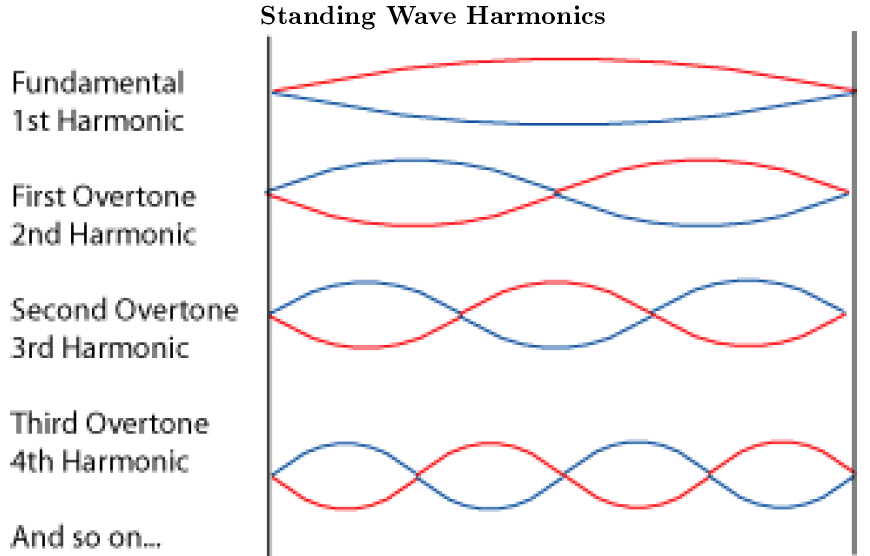
The harmonic series is what makes music feel natural to our ears, and understanding it is key to working with harmonics and overtones.
It all starts with the fundamental frequency (the lowest frequency produced by a vibrating string, column of air, or any vibrating medium).
Above the fundamental, you get multiples of the fundamental, also known as harmonics, which appear in integer multiples, like:
- 2x the fundamental frequency
- 3x the fundamental frequency
- 4x the fundamental frequency
For example, if a fundamental is at 100 Hz, its harmonics will be at 200 Hz, 300 Hz, 400 Hz, and so on (pretty straightforward, right?).
These harmonics are what give instruments their timbre because different musical instruments emphasize different harmonics in the harmonic series.
Interestingly enough, the second harmonic (200 Hz) is exactly twice the frequency of the fundamental 一 meaning it aligns with the first octave higher in pitch.
The way these waves interact is what determines whether a sound feels warm, bright, or even harsh.
This concept applies to everything from stringed instruments and brass instruments to synthesizers, where harmonics can be generated, manipulated, or completely reshaped.
-
Pro Tip: Even Harmonics vs Odd Harmonics
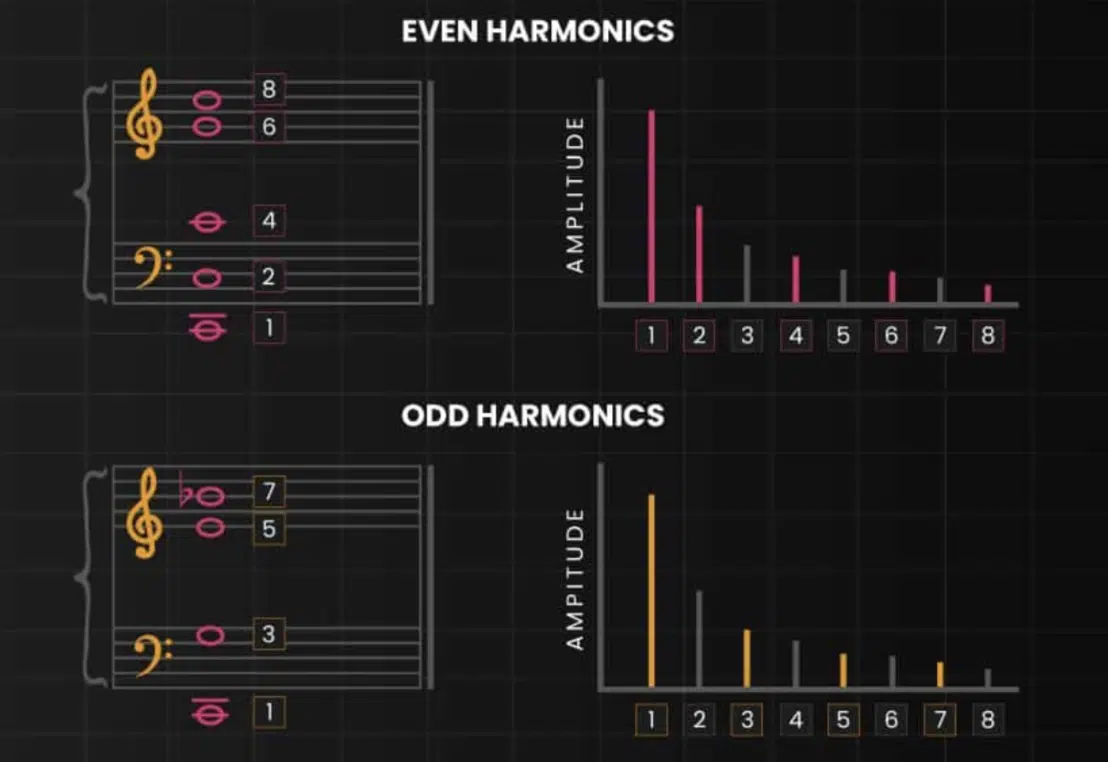
One of the biggest differences in harmonics comes down to even harmonics versus odd harmonics, and knowing how they affect sound is huge when producing music.
Even harmonics (like the 2nd, 4th, and 6th) are integer multiples of the fundamental frequency that create a more pleasing, warm musical tone.
This is why analog gear and tube amplifiers are so loved, by the way.
Odd harmonics (3rd, 5th, 7th, etc.), on the other hand, tend to sound more aggressive 一 leading to a sharper, nasal character that’s common in distortion-heavy sounds.
For example, square waves are packed with odd harmonics, which gives them that punchy, biting character you hear in chiptune music and some synth basses.
Sawtooth waves, on the other hand, include both even harmonics and odd harmonics 一 making them much fuller and full of depth.
If you’re designing a bass patch and want it to cut through the mix, hyping up those odd harmonics can add presence.
On the flip side, boosting even harmonics can make it smoother and more natural.
The key is knowing how harmonics and overtones shape the timbre, so you can tweak them using synthesis, EQ, and saturation techniques.
Overtones and Their Role/Significance
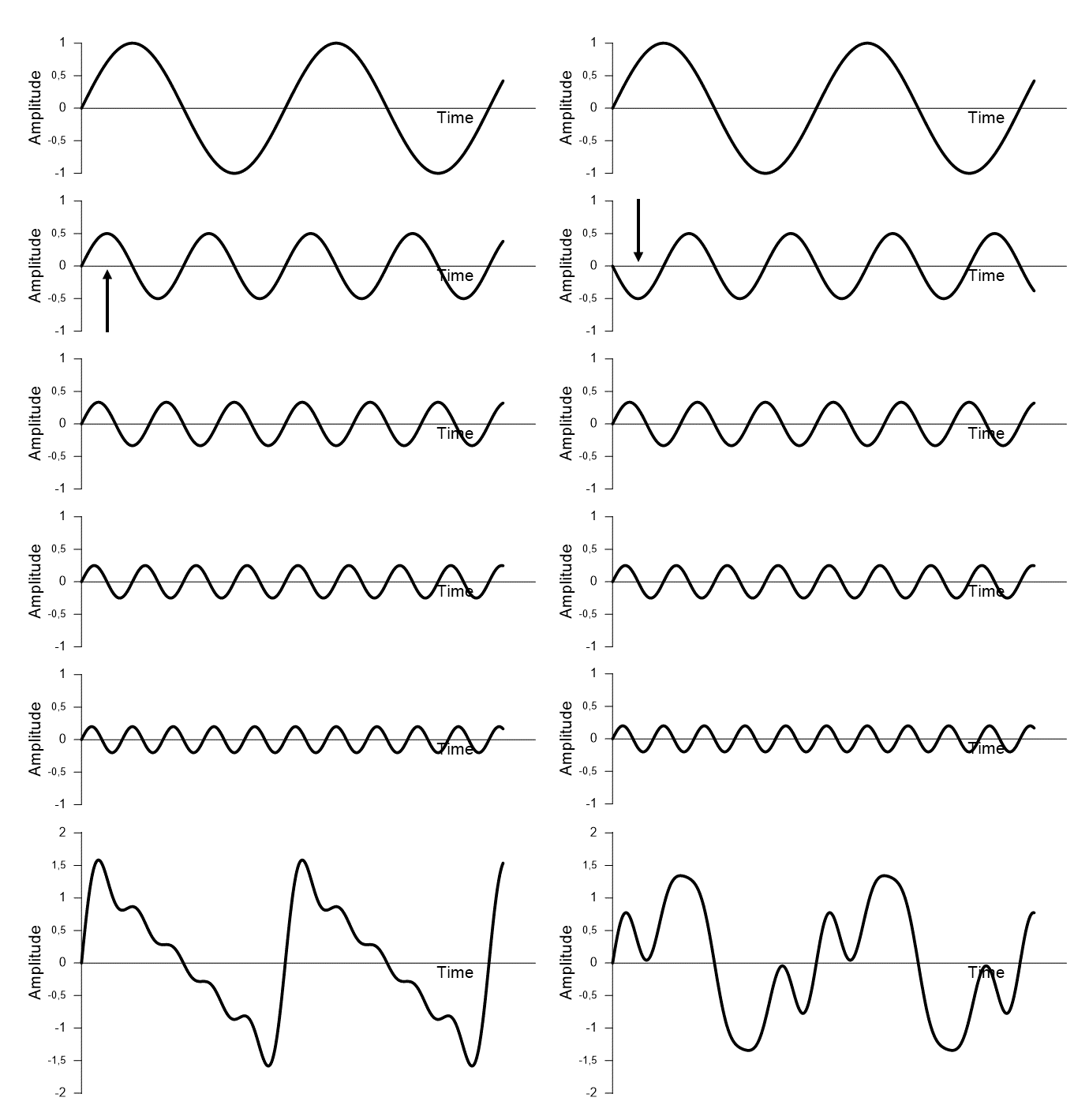
The difference between harmonics and overtones is super important when it comes to shaping the timbre of any sound, as we just talked about.
And, knowing exactly how to manipulate them can drastically change how an instrument or synth patch or sample-based instrument sits in a mix.
While harmonics are always integer multiples of the fundamental frequency, overtones may or may not align with these ratios…
This is why certain musical instruments, samples, and percussion elements sound more complex than others.
For example, when you design a synth bass patch, the fundamental frequency might dominate, but by layering additional harmonic partials at 200 Hz and 400 Hz, you can create a more defined and solid low end without excessive EQ boosting.
However, if you process a snare sample with heavy saturation, the sound contains both harmonics and inharmonic overtones, which creates a more aggressive, resonant tone.
This makes it more unpredictable and metallic due to complex vibrational modes (especially when distortion or transient shaping is applied).
When it comes to synth design, boosting specific harmonic partials at precise frequencies can enhance warmth in a sound without muddying the mix.
For example, this could be like emphasizing the third harmonic at 300 Hz when the fundamental tone is 100 Hz.
NOTE: Using a spectrum analyzer can help visualize which overtones are present, making it easier to tweak them using subtractive EQ, harmonic excitation, or wavefolding techniques to reshape the harmonic structure.
If you’re designing a pad or lead synth, focusing on upper partials (like the fifth and seventh harmonic) can create a more ethereal or bright character.
This will make it stand out without excessive high-frequency boosting.
In my experience, this technique works great when it comes to ambient, synthwave, and cinematic music, where harmonic richness is key to creating immersive textures.
Bottom line, properly managing overtones and harmonics lets you either clean up a sound for better mix clarity or make it stand out with added edge and depth.
-
Harmonics in Digital Sound Synthesis
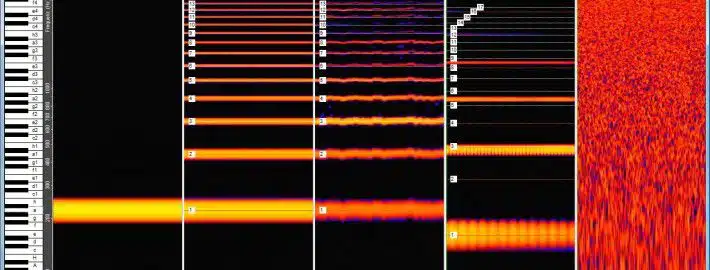
In the sound synthesis world, harmonics and overtones define the timbre of a sound and how we perceive it in a mix.
Every synthesizer manipulates harmonic partials in different ways, through:
- Additive synthesis (stacking individual sine waves to build complex tones)
- Subtractive synthesis (removing specific harmonics using filters)
- FM synthesis (modulating one frequency with another to create new harmonics)
- Wavetable synthesis (morphing between waveforms to shift harmonic content)
For example, a sawtooth wave contains a full range of integer multiples of the fundamental frequency, making it perfect for creating epic leads and basses.
Boosting the second and fourth harmonics at 200 Hz and 400 Hz when designing a bass patch can add clarity and depth without overloading the low end.
A square wave, on the other hand, emphasizes odd harmonics 一 giving it a sharper, more nasal character.
This is why it’s often used for chiptune leads and resonant synth basses.
If you want a thicker tone, layering a square wave with a slightly detuned saw wave at 10-15 cents apart can introduce a natural chorusing effect.
Using wavefolding techniques in modular synthesis can introduce new harmonic partials by reflecting a waveform’s peaks back onto itself when they exceed a threshold.
Applying wavefolding at 40-60% depth on a simple sine wave can add bright, metallic overtones, ideal for aggressive dubstep basses or distorted synth leads.
In FM synthesis, modulating the carrier frequency with a high-frequency modulator at a ratio of 1:3 or higher generates inharmonic overtones.
You can use it to design metallic bell tones or digital plucks.
Also, adjusting the modulation index between 2.5 and 5 can help you control how intense these overtones become, making the sound either subtle or highly resonant.
Understanding how these synthesis techniques shape harmonics and overtones allows digital music producers to create dynamic textures, create custom synth patches, and refine the harmonic balance of their sound sources in a mix.
Sound Design Techniques/Tricks
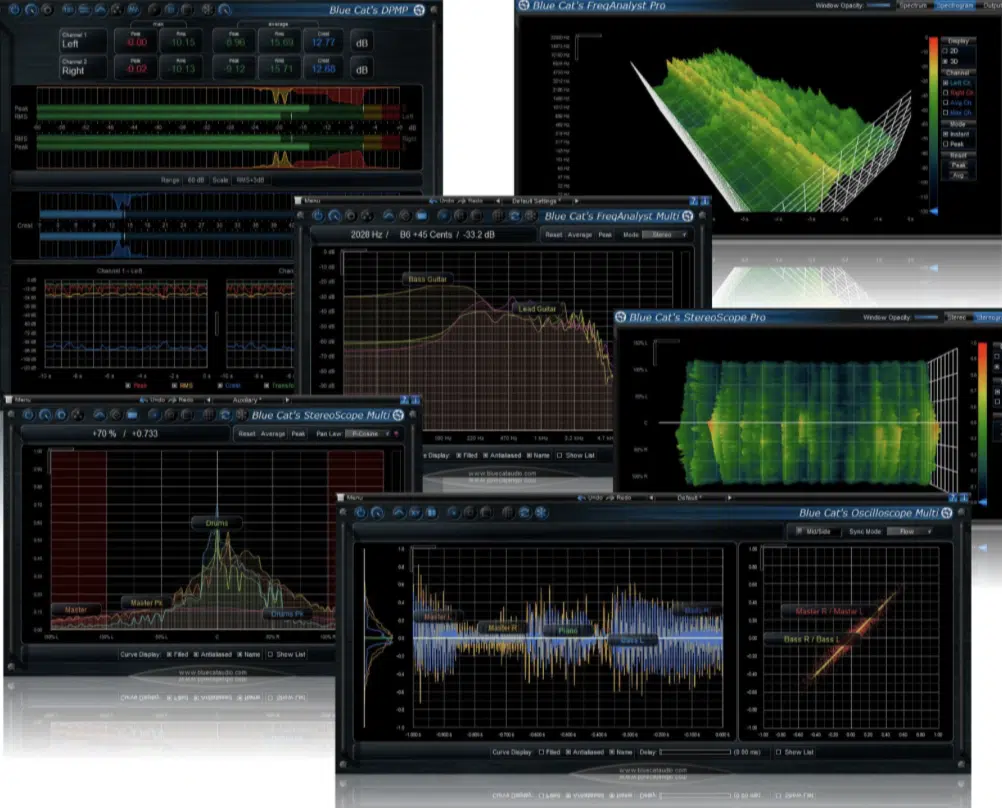
Creating unique sound design textures relies on harmonic layering, overtones, and timbre manipulation to shape a dynamic sound.
Layering a pure sine wave with a sawtooth wave creates a fuller tone since the sawtooth wave contains all integer multiples of the fundamental frequency, while the sine wave reinforces the fundamental itself.
For even more depth, detuning the sine wave by 3-5 cents below the sawtooth wave can create a subtle phase interaction so the sound feels thicker and more organic.,
Adding soft saturation to a pluck sound at 3-5% drive in FabFilter Saturn 2 enhances upper partials, which makes it more present without increasing volume.
For a more aggressive character, increasing the drive to 8-10% introduces odd harmonics, which can be useful for adding warmth and edge to a lead synth or bassline.
Moving forward, designing realistic instruments involves boosting the second harmonic and introducing mild inharmonic overtones to simulate real string instruments.
And, if you’re designing an electric piano patch, boosting 200 Hz and 400 Hz by 2-3 dB can help capture the natural harmonic balance of a real-world instrument.
Automating a band-pass filter with resonance at 800 Hz on a complex waveform in Serum can mimic how real-world musical instruments evolve over time.
Keep in mind that increasing the resonance by 10-20% enhances the dynamic movement 一 making it more expressive in response to velocity sensitivity.
Wavefolding distortion (available in modular synths like Mutable Instruments Warps) folds waveform peaks back onto themselves.
It creates controlled inharmonic overtones for sick metallic, futuristic tones.
NOTE: Applying wavefolding at 50-70% depth to a simple waveform, such as a triangle wave, introduces complex partials that make it perfect for designing robotic textures or industrial basses.
Using spectrum analyzers like Voxengo SPAN helps identify and tweak unwanted harmonics or gaps in the harmonic series for a more balanced sound.
If you notice an excessive buildup at 2 kHz, applying a narrow EQ cut (-2 dB with a Q factor of 6-8) can help tame harshness while maintaining clarity.
Finally, boosting resonant frequencies at key points (e.g., 500 Hz and 2 kHz on a piano sample) can enhance clarity and presence in a mix.
Applying a gentle high-shelf boost at 5 kHz (+1.5 dB) can add brightness to a pad or atmospheric sound without introducing harshness.
Harmonics and Mixing Techniques
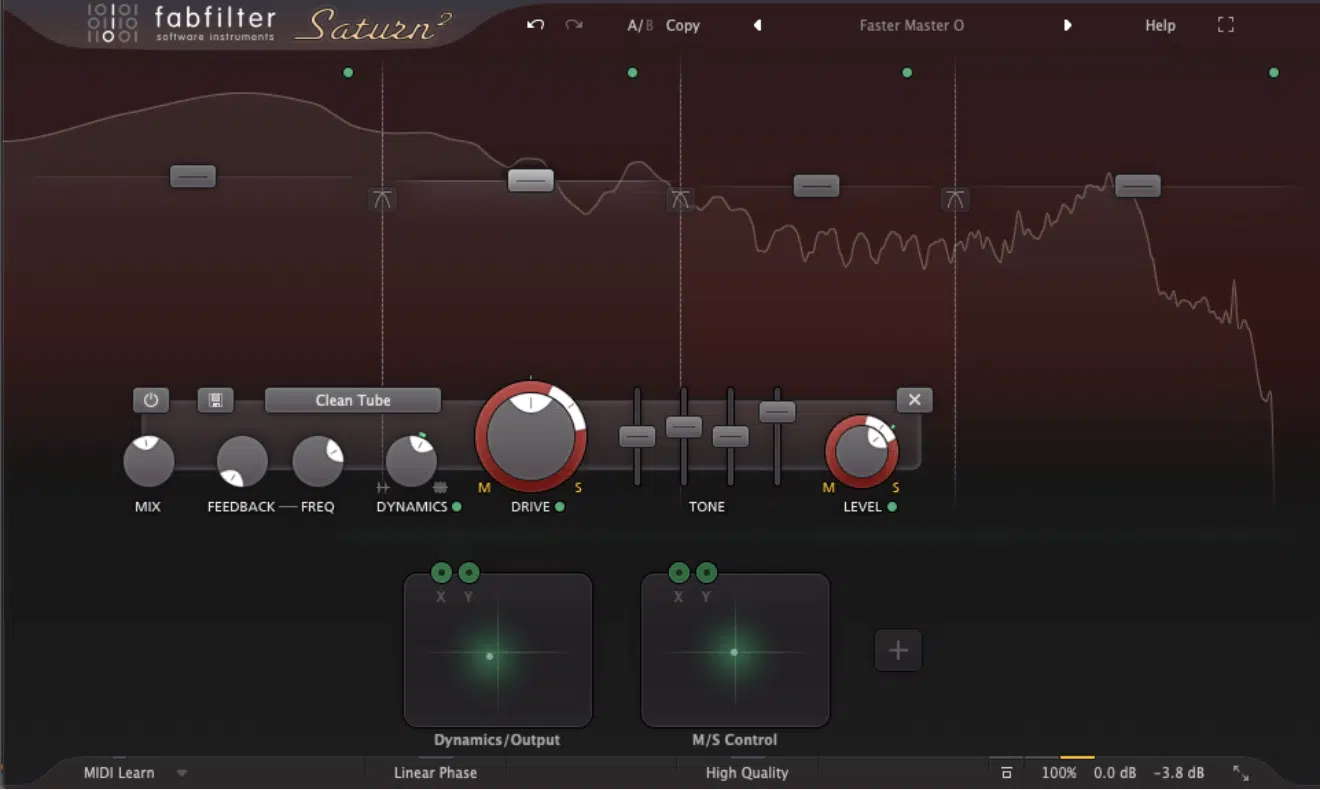
Balancing ideal harmonics and overtones in a mix is what makes the difference between a clean, professional track and one that sounds cluttered.
When you produce harmonics too much and they overlap in the same frequency range, certain elements can become indistinct.
This makes it difficult to separate instruments in the mix.
Using EQ with narrow Q values between 2 and 4 to cut problematic harmonic frequencies can create more space…
Like, if a synth and vocal both peak at 3 kHz, notching out 2-3 dB from one of them ensures better separation.
NOTE: A common issue is harmonic clashes between a bassline and a kick drum, often around 50-100 Hz. So make sure to reduce the bass fundamental frequency by 2-3 dB or applying sidechain compression with an attack of 5-10 ms can let the kick hit through without losing energy.
Enhancing harmonic content selectively can add warmth or brightness.
Just keep in mind that boosting 5-7 kHz on vocals by 2-4 dB enhances clarity, while taming 200-400 Hz on synth pads avoids muddiness.
Applying gentle harmonic saturation (around 10-15%) on instruments like electric pianos can add presence without making them harsh.
Over-processing harmonics, however, can lead to an unnatural or overly brittle sound, so using subtle EQ moves (0.5-2 dB cuts or boosts) helps maintain a natural tone.
Carefully managing harmonics makes sure that every instrument retains its unique timbre 一 making the mix feel spacious/balanced.
Advanced Topics (Bonus)
Once you’ve mastered the basics of harmonics and overtones, you have to play around with more advanced techniques/topics. It can open new creative possibilities in your sound design and mixing journey. So, now let’s wrap things up with things like inharmonicity, where different overtones deviate from the expected harmonic series, or psychoacoustic effects.
-
Inharmonicity: Understanding and Applying Non-harmonic Overtones
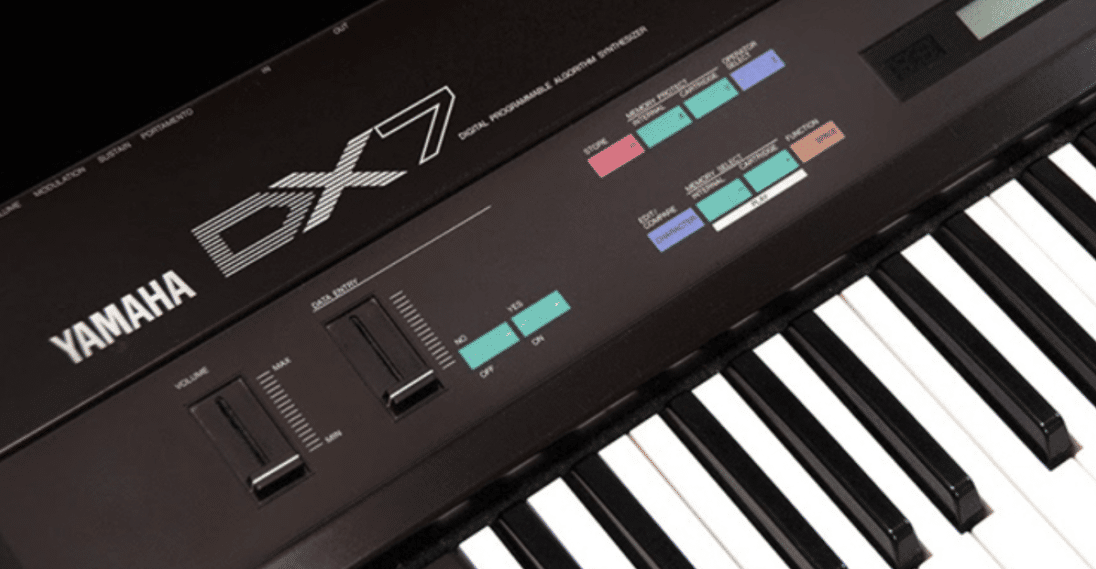
Inharmonicity occurs when the overtones of a sound source deviate from the expected harmonic series.
It means they are no longer integer/number multiples of the fundamental frequency.
In digital synthesis, this effect is key for designing:
- Metallic textures
- Bell-like textures
- Abstract sound textures
It creates non-harmonic partials that don’t align with traditional harmonic structures.
If you increase the modulator index in FM synthesis beyond 2.5, it enhances inharmonicity, generating metallic overtones commonly found in bells, cymbals, and electric pianos.
Using wavefolding distortion at 60-80% depth on a triangle wave can introduce controlled inharmonic overtones.
This is perfect for knocking out glitchy basslines or futuristic synth leads.
One of the key causes of inharmonic overtones in stringed instruments is the formation of a standing wave, where specific points along a vibrating medium remain stationary while other areas oscillate at different frequencies.
If you’re synthesizing a plucked string sound, applying Karplus-Strong physical modeling with a damping factor of 0.7-0.9 helps replicate this natural inharmonicity.
When it comes to percussion instruments, a standing wave interacts with the vibrating medium 一 producing inharmonic overtones that shape the metallic or bell-like sound.
For instance, boosting 2-5 kHz in a synthesized hi-hat sample exaggerates these overtones, which makes it cut through a mix without adding artificial brightness.
NOTE: In digital synthesis, modulating a sine wave at such standing waves/points (e.g., using a modulator-to-carrier ratio of 1:1.414 in FM synthesis) can generate realistic bell tones by emphasizing non-harmonic partials.
Understanding how a standing wave interacts with different vibrational modes is super important when designing realistic instrument simulations.
Or, when manipulating resonant frequencies to create unique textures in EDM production because you can really get as crazy as possible.
If you apply a band-pass filter at 800 Hz with a Q of 5, it can emphasize specific vibrational modes, adding organic motion to an otherwise static synth texture.
By carefully controlling inharmonic overtones through synthesis techniques like FM modulation, physical modeling, and resonant filtering, you can create everything from lifelike instrument emulations to entirely new, otherworldly soundscapes.
-
Psychoacoustic Effects Related to Harmonics and Overtones

The way we perceive harmonics and overtones is influenced by psychoacoustic effects, which determine how we interpret:
- Timbre
- Pitch
- Loudness
The missing fundamental effect is a phenomenon where even if the fundamental frequency of a musical tone is absent, the brain reconstructs it based on the pattern of upper partials…
For example, if a bassline emphasizes 100 Hz, 200 Hz, and 300 Hz, listeners will still perceive 100 Hz even if it’s not physically present in the sound.
Pretty cool, right?
Comb filtering, caused by delayed waves interfering with themselves, can create artificial boosts or dips at specific harmonic frequencies.
It changes the perceived natural frequency of a sound source 一 this is why small rooms with reflective surfaces often make vocals sound hollow or metallic.
Also, the precedence effect causes listeners to perceive the direction of a sound based on the first arrival of a wave, even if later reflections are louder.
NOTE: This principle is used in mixing by placing short pre-delay settings (10-30 ms) on reverb to create a sense of depth without muddying the fundamental tone/note.
You can use psychoacoustics to make mixes sound louder without increasing peak levels; adding subtle harmonic distortion around 2 kHz to 5 kHz can enhance perceived brightness without excessive EQ boosting.
Side note, if you want to learn all about timbre, pitch, and loudness, I got you.
-
Exploring the Undertone Series
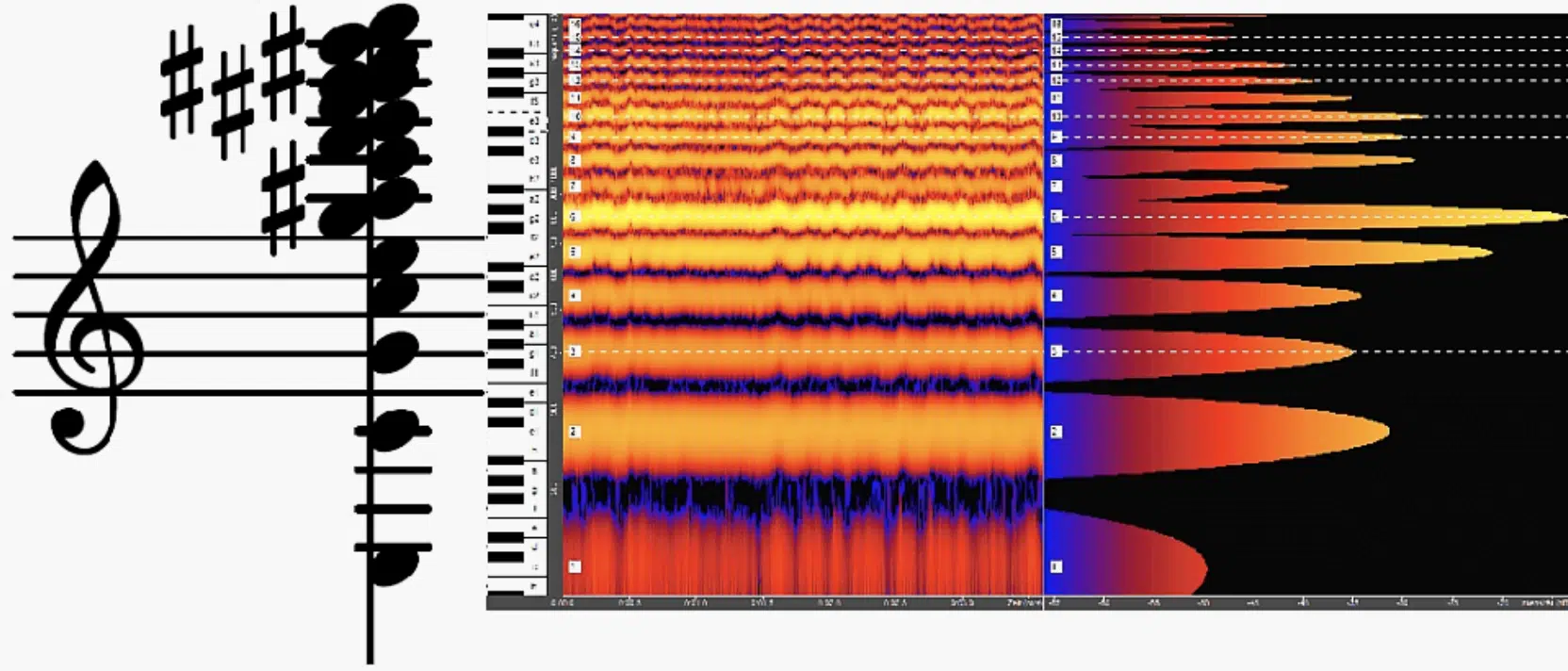
The undertone series is the inverse of the harmonic series, where the frequencies decrease in whole-number divisions of the fundamental frequency, rather than increasing in integer/whole number multiples.
Unlike harmonics, which are naturally present in most musical instruments, undertones must be artificially reinforced.
This is why they are more common in experimental tunings and resonant frequencies found in brass instruments like tubas.
A great example of this concept is tuning a bass drone at 100 Hz, then reinforcing 50 Hz, 33.3 Hz, and 25 Hz using a frequency shifter to emphasize the undertone series.
It creates a deeper and darker effect in cinematic sound design.
In digital synthesis, spectral inversion techniques can be used to mimic undertones 一 creating eerie textures that contrast the typical overtone series.
You can hear this all day in horror film scores and dark ambient music.
While the undertone series is rarely used in traditional Western harmony, it’s perfect if you’re looking to play around with new vibrational modes and create unique timbres in experimental electronic music.
Final Thoughts
And there you have it: everything you need to know about harmonics and overtones.
Remember, it’s all about understanding how different harmonic partials interact, shaping the timbre of a sound, and applying the right synthesis and mixing techniques.
Plus, making sure to fine-tune resonant frequencies, balance upper partials, and control inharmonic overtones to avoid muddiness and achieve clarity.
Luckily, by using all of the tips, tricks, and techniques in this guide, you’ll be able to manipulate harmonics and overtones like a professional.
Believe me, your mixes will sound way more polished, dynamic, and full of depth.
And, as a special bonus, you’ve got to check out this legendary Free EDM Drum Kit that includes 40+ individual drum samples, loops, and MIDIs.
They’re all specifically designed to make your EDM tracks sound super clean, crisp, and polished to perfection.
All of the samples you’ll get are absolutely perfect for creating punchy drums, adding rhythmic textures, and playing around with harmonic saturation, EQ shaping, and transient processing.
Plus, all of these epic samples were created by some of the best producers and sound designers in the game, so you’re getting the highest-quality sounds.
And yes, they’re all 100% royalty-free, so you can use them however you’d like.
Bottom line, when it comes to harmonics and overtones, you have to remember to analyze your harmonic structure and enhance/tame specific frequencies.
Just don’t forget to always pay attention to resonant peaks, wave interactions, and overtone layering to refine the balance of your mix like a boss.
This way, your tracks will always have clarity, warmth, and professional-level depth that stands out in any genre/style.
And, never stop growing, learning, and trying out new techniques when it comes to harmonics and overtones.
That way, you can push your production skills to the next level and always create music that sounds fresh, unique, and undeniably pro.
Until next time…







Leave a Reply
You must belogged in to post a comment.